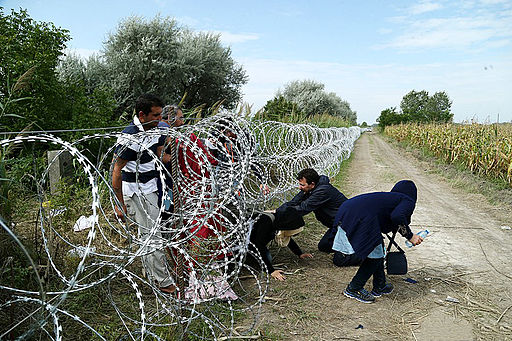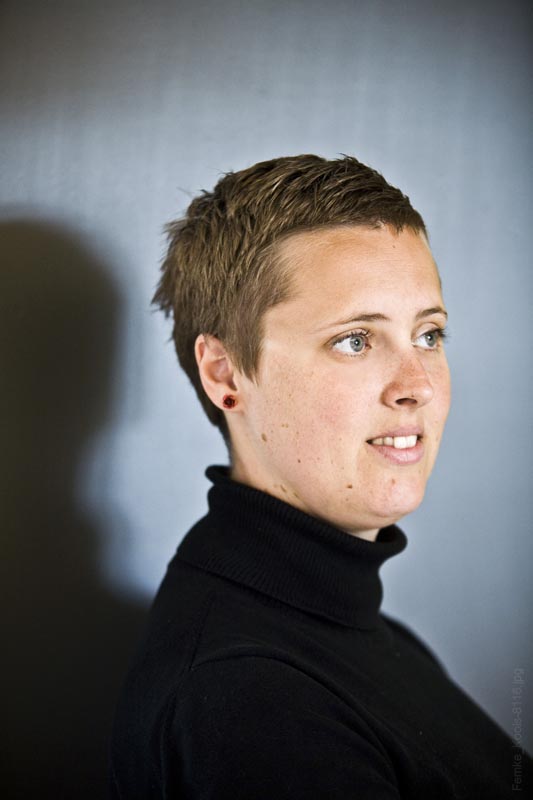Beyond the refugee crisis

Anyone who thinks that all asylum seekers who are granted a residence permit in the Netherlands stay here forever, is wrong.
Of all the people from Afghanistan, Iraq, Iran, former Yugoslavia and Somalia who were registered in the Netherlands in the Personal Records Database (BRP) in 1999, a third no longer lived in the Netherlands ten years later. Which relocations immigrants make from their assigned place in the Netherlands is the subject of the PhD research by Marloes de Hoon at the Faculty of Arts and Social Sciences. Her research is also included under the umbrella of ITEM, the Institute for Transnational and Euregional Cross-border Cooperation and Mobility. Together with five other PhD candidates at ITEM, she published the brochure ‘Beyond the refugee crisis: A reflection from different perspectives on the Dutch case’.
In the publication, lawyers, an economist and a sociologist bring together their expertise on the ‘refugee crisis’ in Europe, with an emphasis on the Netherlands - with topics from the impact of criminal law on residence permits to access social welfare benefits and pensions for refugees. Marloes de Hoon: “All ITEM research is about the role of the border in Euregional issues, but from very different disciplines and perspectives. With this publication, we wanted to work together on one theme because we believe that different disciplines can enhance scientific progress together.”
Relocations within the region
De Hoon’s own contribution, entitled ‘Dispersal and residential mobility of asylum migrants in the Netherlands’, is a preliminary description of the scientific findings on relocation trajectories of asylum migrants in different European countries. In the Netherlands, these migrants typically relocate during their first years in the Netherlands. This usually involves forced relocations between shelter locations or placement from a shelter to a private home in a Dutch municipality. For the placement, status holders have limited influence; only since 2016 has the government tried to take into account, for example, the work experience of asylum seekers and the region in which they are placed. De Hoon: “For an academic, the dispersal policy is very interesting—people can’t choose where to live, so what influence does that location have on their choice to stay or to move on? What distinguishes the people who stay from the people who go? It’s often thought that a physical place of residence is not so important to people because, virtually, they stay in contact with the whole world. But I suspect that where you live, the local context, is still very important for wellbeing.”
Big cities
Before the dispersal policy was introduced in Britain, 90% of the asylum migrants lived in London. Large cities often have a huge appeal to migrants, possibly because they expect to find work more easily, or a better home. In the Netherlands, status holders move from the various smaller municipalities where they are placed to the cities. Some move to the west of the country, but most mobility takes place within the regions (north, east, south, west). And the fact that there is already a large group of compatriots living somewhere seems to be attractive. For example, Dordrecht has a large concentration of Angolans. “Migration usually means a loss in many areas. If it’s hard to find work, people will soon fall back on contacts with compatriots.”
In her PhD research, De Hoon, who also works at the Central Bureau of Statistics (CBS) one day a week, charts the relocations of refugees who received a residence permit in the Netherlands in the late 1990s. She is following them during a ten-year period and hopes to discover what role the country of origin and, for example, the household composition plays in relocations. It is expected that again a third of the status holders will no longer be found after ten years. Only a small percentage (7-10%) registers with the municipality to which they relocate. “One of the complex things about my research is that you’re investigating a transnational phenomenon using national sources. These files are not yet linked internationally. Based on these figures, I can’t find reasons for leaving, but I can map out whether status holders relocate during a certain phase of life and whether, for example, economic status plays a role.”
Naturalisation as a ticket
The assumption that refugees stay forever in the country where they are granted a residence permit is, in any case, unjustified according to previous research. “Some want to return to their country of origin as soon as it’s safe. Or they were required to apply for asylum in the Netherlands, but would rather go to another country. In this context, I want to investigate the naturalisation process. Obtaining Dutch nationality is often seen as the ultimate moment in the integration process, but it also makes people EU citizens at the same time, with the right to move within the EU. I also want to figure out to what extent naturalisation leads to departure from the Netherlands.”
She finds providing policy recommendations on the basis of research findings a bit tricky for now. “I see it as the role of academics to contribute facts so that policymakers and others understand the big picture of, in this case, migration. Providing a broad context—that’s what drives me.”
Marloes de Hoon still has another 2.5 years to work on her PhD at Maastricht University, and is hoping to get her degree with Prof. Maarten Vink and Prof. Hans Schmeets.
‘Beyond the refugee crisis: A reflection from different perspectives on the Dutch case’ can be viewed online. In addition to the article by Marloes de Hoon, the publication contains a contribution from PhD candidates at ITEM, Kim Geurtjens, Lavinia Kortese, Kilian Heller, Bastiaan Didden and Sander Kramer.
Published on Law Blogs Maastricht
Other blogs:
Also read
-
In early 2021, Europe’s twelve leading football clubs joined hands to create the European Super League. Despite the presence of notable clubs such as Liverpool, Manchester United, Milan, Barcelona and Real Madrid, the League soon fell apart. Unable to convince those on the football field, the three...
-
“I don’t hate Facebook. I love Facebook. I want to save it”, wrote Frances Haugen as she resigned from Facebook and revealed tens of thousands of documents alleging Facebook has time and again prioritized profit over people.
-
The EU recently introduced text and data mining exceptions to copyright infringement. However, they are too narrow and situation-specific to enable scientific development. In my master thesis, I suggest adopting a non-enjoyment exception for new technological uses, including text and data mining.



